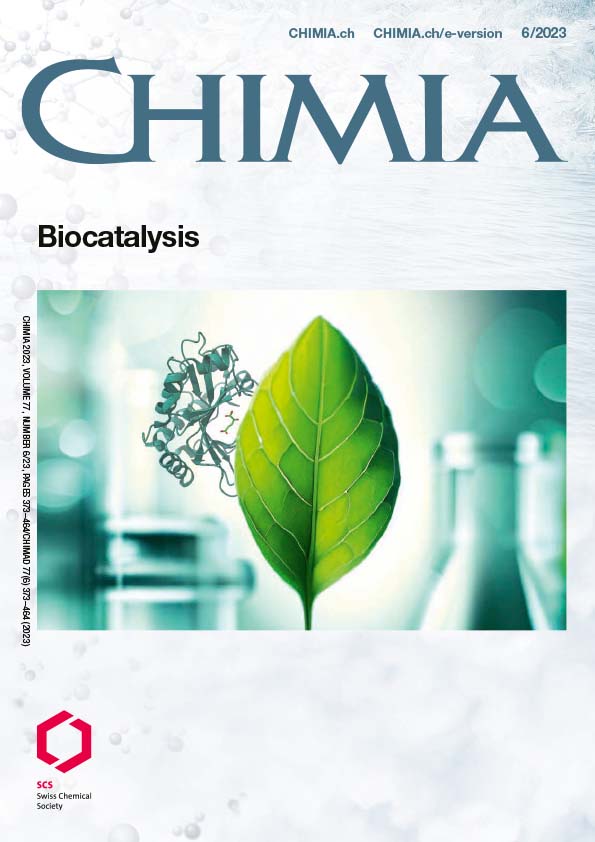Late Microaerobic Growth for Efficient Production of Human Cytochrome P450 3A4 in E. coli
DOI:
https://doi.org/10.2533/chimia.2023.417PMID:
38047781Keywords:
Biocatalysis, Cytochrome P450, Drug development, FermentationAbstract
Detailed preclinical characterization of metabolites formed in vivo from candidate drug substances is mandatory prior to the initiation of clinical trials. Therefore, inexpensive and efficient methods for drug metabolite synthesis are of high importance for rapid advancement of the drug development process. A large fraction of small molecule drugs is modified by monooxygenase cytochrome P450 3A4 produced in the human liver and intestine. Therefore, this enzyme is frequently employed to catalyze metabolite synthesis in vitro, making 3A4 availability a critical requirement in early drug development. Unfortunately, the recombinant production of this enzyme in microbial hosts is notoriously difficult. Maintaining low oxygen transfer rates and the use of rich media for host cultivation are required for P450 3A4 production. However, detailed studies on the relationship between oxygen supply and P450 3A4 space-time yields are missing. We describe an improved biotechnological process for the heterologous expression of P450 3A4 together with its redox partner, cytochrome P450 reductase, in Escherichia coli. Enzyme production was most efficient under so-called “late microaerobic” growth conditions, in which the cells have just not yet made the switch to anaerobic metabolism, characterized by a limited oxygen supply leading to oxygen concentrations in the liquid phase that are far below the detection limit of standard oxygen electrodes. Furthermore, feeding the carbon source glycerol as well as controlling cellular acetate formation improved process productivity. The presented protocol resulted in the formation of functional recombinant 3A4 at concentrations up to 680 nmol L-1.
Downloads
Additional Files
Published
How to Cite
Issue
Section
License
Copyright (c) 2023 L. Marchetti, Matteo Planchestainer, S. Planke, M. Held

This work is licensed under a Creative Commons Attribution 4.0 International License.







